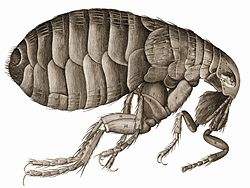User:The wub/Portal
| Highlights | Explore | Get involved |

The United Kingdom of Great Britain and Northern Ireland (usually shortened to the United Kingdom, the UK or - informally - Britain) is a country and sovereign state lying north-west of the continent of Europe. It occupies all of the island of Great Britain and the north-east of the island of Ireland, sharing a border with the Republic of Ireland. The United Kingdom is bounded by the Atlantic Ocean, and its ancillary bodies of water, including the North Sea, the English Channel, the Celtic Sea, St George's Channel, and the Irish Sea. It is linked to France and Continental Europe by the Channel Tunnel.
The United Kingdom is a constitutional monarchy composed of four constituent countries: England, Scotland, Wales and Northern Ireland. The current monarch is Queen Elizabeth II, who is also the Queen and Head of State of fifteen other Commonwealth Realms, including Canada, Australia and New Zealand. The Crown Dependencies of the Channel Islands and the Isle of Man form a federacy with the United Kingdom collectively known as the British Islands. The UK also has fourteen overseas territories, remnants of the British Empire which at its height encompassed a quarter of the world's surface and population.
Although Britain was the foremost great power during the 19th century, and a superpower in the early 20th, the economic cost of two world wars and the decline of its empire in the latter half of the 20th century diminished its status in global affairs. However, as a permanent member of the United Nations Security Council, a nuclear power, a member of the G8, the world's fifth largest economy, and having the third highest defence spending, the UK remains an important political, economic and military world power. It is a member of the European Union and the Commonwealth of Nations.
Featured article
The East End of London is the area of London, England, east of the medieval walled City of London and north of the River Thames. Starting in the 19th century, the area experienced extreme overcrowding and a concentration of poor people and immigrants. Successive waves of immigration began with Huguenot refugees creating a new extramural suburb in Spitalfields in the 17th century. They were followed by Irish weavers, Ashkenazi Jews and, in the 20th century, Bangladeshis. Many of these immigrants worked in the clothing industry. The abundance of semi- and unskilled labour led to low wages and poor conditions throughout the East End. This brought the attentions of social reformers during the mid-18th century and led to the formation of unions and workers associations at the end of the century. The radicalism of the East End contributed to the formation of the Labour Party and demands for the enfranchisement of women. Official attempts to address the overcrowded housing began at the beginning of the 20th century under the London County Council. World War II devastated much of the East End, with its docks, railways and industry forming a continual target, leading to dispersal of the population to new suburbs, and new housing being built in the 1950s. The final closure of the London docks in 1980 created further challenges and led to attempts at regeneration and the formation of the London Docklands Development Corporation. The Canary Wharf development, improved infrastructure, and the Olympic Park mean that the East End is undergoing further change, but some of its parts continue to contain some of the worst poverty in Britain. (Full article...)
Featured biography
George Fox was an English Dissenter and the founder of the Society of Friends. At Derby in 1650 Fox was imprisoned for blasphemy; a judge mocked Fox's exhortation to "tremble at the word of the Lord", calling him and his followers "Quakers"—now the common name of the Society of Friends. Living in a time of great social upheaval, he rebelled against the religious and political consensus by proposing an unusual and uncompromising approach to the Christian faith. His journal is a text popular even among non-Quakers for its vivid account of his personal journey. (Full article...)
Did you know...
Featured picture

Robert Hooke's drawing of a flea in his Micrographia, a book of observations through various lenses published in 1644. The book demonstrated the tremendous power of the new microscope. On completing the book, Samuel Pepys described it as: "the most ingenious book that I ever read in my life."



